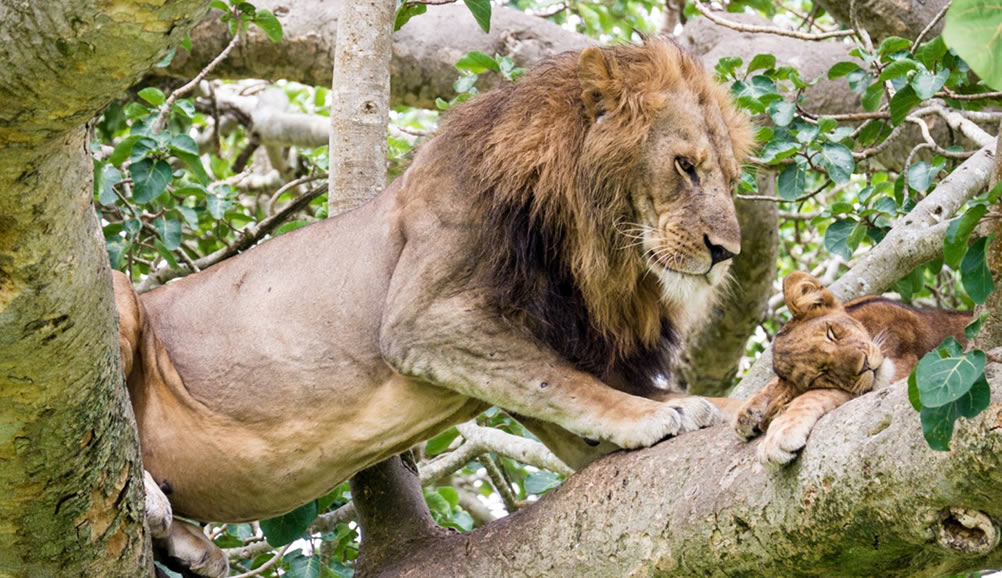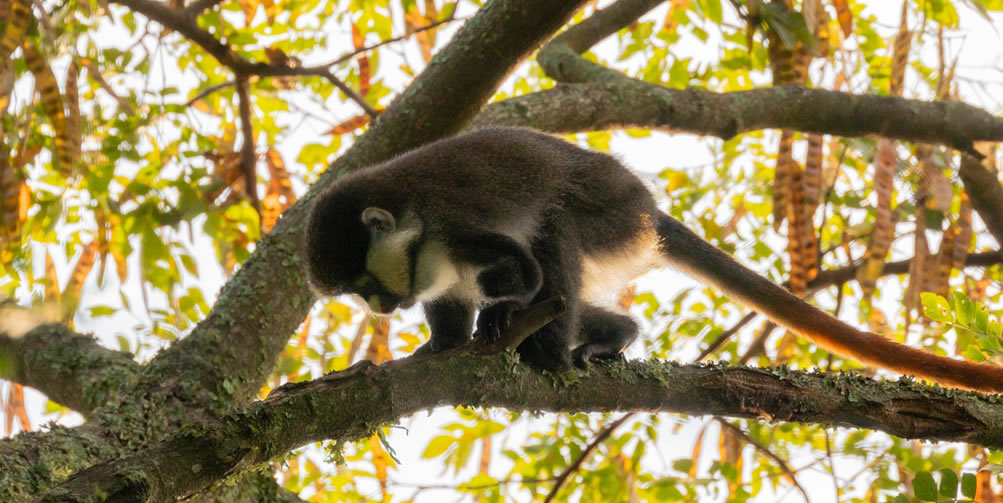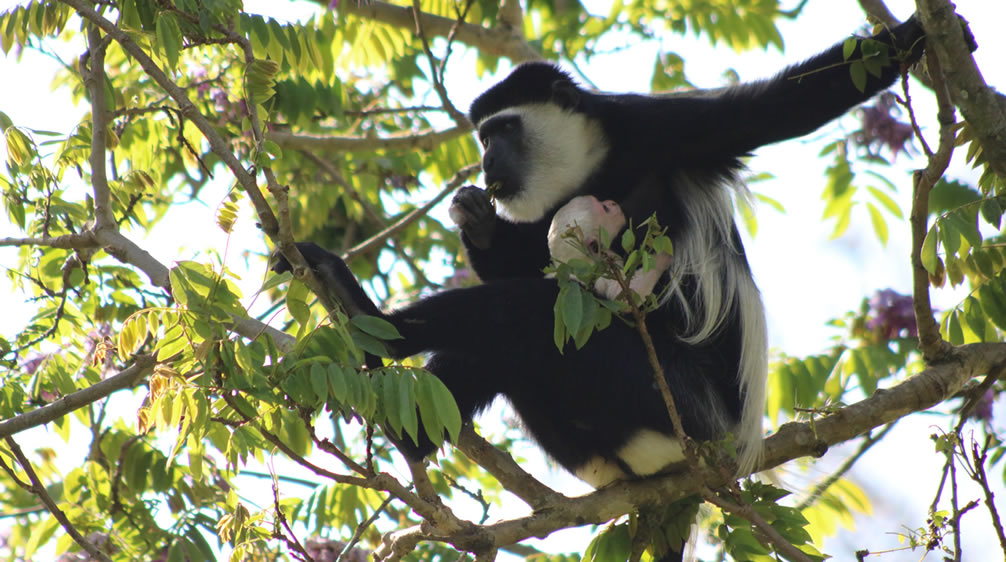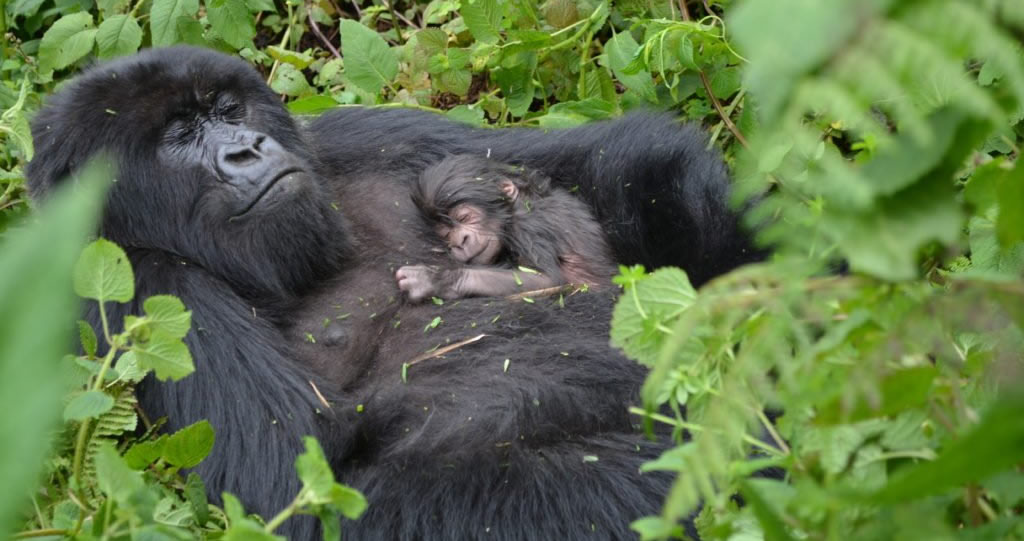Do you want to study wildlife in Uganda? Do you know the type of wild animals and bird life in Uganda? General description of varieties of wild adventures of Uganda National Parks and other wildlife protected areas.
Wildlife in Uganda should be your number one among the reasons to visit and travel in Uganda.
Trekking bwindi gorillas will give you a watching experience. Note that this endangered species has half of its population in Uganda. So while on your tour, spare USD 700 for this thrilling adventure as you also contribute to its conservation.
Other activities include bird watching, game viewing, and much more.
Animals in Uganda include Lion, Elephant, Gorillas, Hippo, Buffalo, eland, Kob, Water buck, Giraffe, sitatunga, Zebra, Hog, Bush back and many others.
 For a long time, Uganda has been overshadowed by it’s bigger and better-known neighbor Kenya. But over the last years word has been getting out that this one is a real gem.
For a long time, Uganda has been overshadowed by it’s bigger and better-known neighbor Kenya. But over the last years word has been getting out that this one is a real gem.
PRIMATES
These are widely spread in Uganda with 13 diurnal species, six of which are guenon monkeys, and 6 nocturnal species. Below is an overview of the several local species.
MONKEYS
All the monkeys found in Uganda belong to the Cercopithecidae family divided into five species including, Papio, Erythrocebus, Cercocebus, Cercopithecus, and Colobus.
There are several types of monkeys under the Cercopithecus species, which include the
VERVET MONKEY
(Cercopithecus aethiops) this has a black face with very distinctive blue male genitals. These monkeys are widely spread in Uganda with four races in existence in and out of national parks but absent from forests and Afro-alpine habitats.
DE BRAZZA’S MONKEY
(Cercopithecus neglectus) This type has a hairy face, a reddish-brown patch around its eyes, white band across its brow, white mustache and beard with a relatively short tail. It is likely to be seen around Mount Elgon and Semliki national parks.
BLUE MONKEY
(Cercopithecus aethiops) the most widely spread in East African forests, it is uniform dark blue-Grey in color, white throat and chest patch with thick fur and backward-projecting hair on its forehead. 20 races and more have been identified, three of which are found in most of the Ugandan forests living in troops of between 4-12 animals including the golden monkey more or less restricted to the bamboo forest in Virunga Mountains.
These monkeys are absent in only two of Uganda’s national parks including Murchison Falls and Lake Mburo national parks but present in the rest and almost every forest in Uganda.
L’HOEST’S MONKEY
(Cercopithecus lhoesti) Other than the rest, this type of monkey is very hard to see basically because it prefers very dense forests. In Uganda, it is more likely to be seen in the Maramagambo forest, Kibale forest, Bwindi forest, and Queen Elizabeth National Park. It has a black face with backward projecting white whiskers partially covering its ears and carries its tail in an upright position.
RED-TAILED MONKEY
 (Cercopithecus Ascanius) the race identified in Uganda is Schmidt. These monkeys are usually in Kibale forest, Bwindi forest, Mpanga, and Budongo forest reserves, and Semliki and Queen Elizabeth national parks. They have a brownish color, white whiskers, and a coppery tail with a heart-shaped patch on the nose, usually move in small pairs, associate with other monkeys and can accumulate in-groups of up to 200.
(Cercopithecus Ascanius) the race identified in Uganda is Schmidt. These monkeys are usually in Kibale forest, Bwindi forest, Mpanga, and Budongo forest reserves, and Semliki and Queen Elizabeth national parks. They have a brownish color, white whiskers, and a coppery tail with a heart-shaped patch on the nose, usually move in small pairs, associate with other monkeys and can accumulate in-groups of up to 200.
RED COLOBUS
(Piliocolobus radius) these are largely restricted to Kibale Forest National Park especially around Bigodi Wetland sanctuary and a few of them in Semliki National Park. With a slightly tufted crown, the red colobus monkeys are sociable and usually live in scattered groups of 50 or more animals.
BLACK-AND-WHITE COLOBUS
 (Colobus guereza) Perhaps the most common and widely spread forest monkey in Uganda wildlife, it is beautifully marked with a black body, white facial markings, and a long whitetail. It lives in small groups, but most spectacular about it is its high jumping skills and the attractive view of its white tail streaming behind.
(Colobus guereza) Perhaps the most common and widely spread forest monkey in Uganda wildlife, it is beautifully marked with a black body, white facial markings, and a long whitetail. It lives in small groups, but most spectacular about it is its high jumping skills and the attractive view of its white tail streaming behind.
PATAS MONKEY
(Erythrocebus patas) the race identified in Uganda wildlife is NILE PATAS restricted to the dry savannah in Kidepo and Murchison Falls National Parks. It has a lankier build; a light reddish-brown coat and a black stripe above the eyes but could easily be confused with Vervet monkey.
BABOONS
(Papio spp) Baboons are widely spread and very common in Uganda with the olive baboon as the only type found in Uganda. They appear in forest reserves, along the roadside and in all apart from three montane national parks.
Baboons are larger in size with a dog-like head with males moving frequently in large troops in search for social dominance but in general, they have a rigid social structure.
GORILLA
 Identified are 3 subspecies of gorillas, the western lowland gorilla as the most common, the lowland gorilla but not present in Uganda.
Identified are 3 subspecies of gorillas, the western lowland gorilla as the most common, the lowland gorilla but not present in Uganda.
The common type in Uganda wildlife is the most threatened mountain gorilla residing in the Bwindi Impenetrable National Park with regular visits to Mgahinga Gorilla National Park.
Gorilla is the bulkiest member of the Primate family and may grow up to 1.8m high and weigh up to 210kgs.
COMMON CHIMPANZEE
(Pan troglodytes) this black-coated ape is amongst the most intelligent animals and closely related to man than any other living creature. Chimpanzees are typical rain forest and woodland animals living in most of the forests of western Uganda and have been habituated for tourists in Budongo and Kanyiyo Pabidi forests, Kibale Forest National park and the Chamber Gorge in Queen Elizabeth National Park.
Chimpanzees live in large loosely bonded communities around a core of related males headed by a prominent male contrary to the female that is not strongly bonded. Different troops have well-defined core territories that are fiercely guarded by regular boundary patrols.
Mother-child bonds are strong such that Mother-son relations may survive for over 40 years while the daughters may leave their mothers after reaching maturity. Please, you need to see their Wildlife style in localities.
Chimpanzees are fruit eaters but they sometimes eat meat, in Uganda, it has been observed that chimps hunt for the blue and red-tailed monkeys.
POTTO
with nocturnal habits, the potto can be seen in Kibale forest during night guided walks and other major rain forests including Bwindi and Queen Elizabeth National Park.
The Potto is a medium-sized sloth-like creature that spends the night’s foraging upside down from tree branches and usually located at night by use of a flashlight.
BUSHBABIES or GALAGOES
Five bushbaby species are found in Uganda Wildlife with the Lesser bushbaby as the most common in all Uganda’s Savannah reserves.
In Kibale and Bwindi forest species identified are; the eastern needled-clawed bushbaby, Thomas bushbaby, and the Dwarf bushbaby, they also appear in Lake Mburo and Queen Elizabeth National Parks.
The bushbaby has a piercing cry that can be heard especially at night and tracing the cry you can see it by the use of a flashlight meeting its sparkling large eyes.
